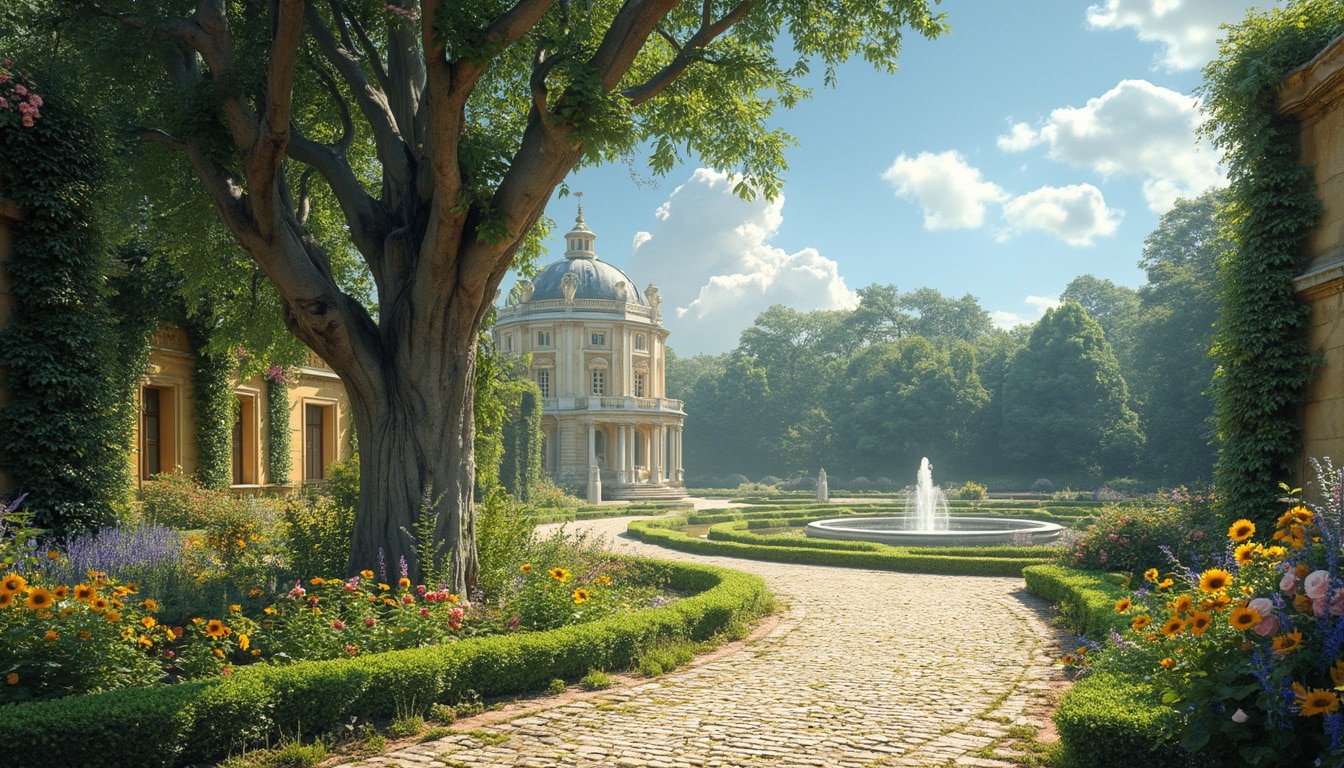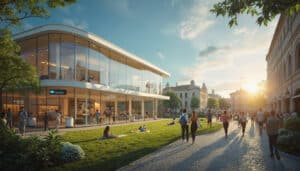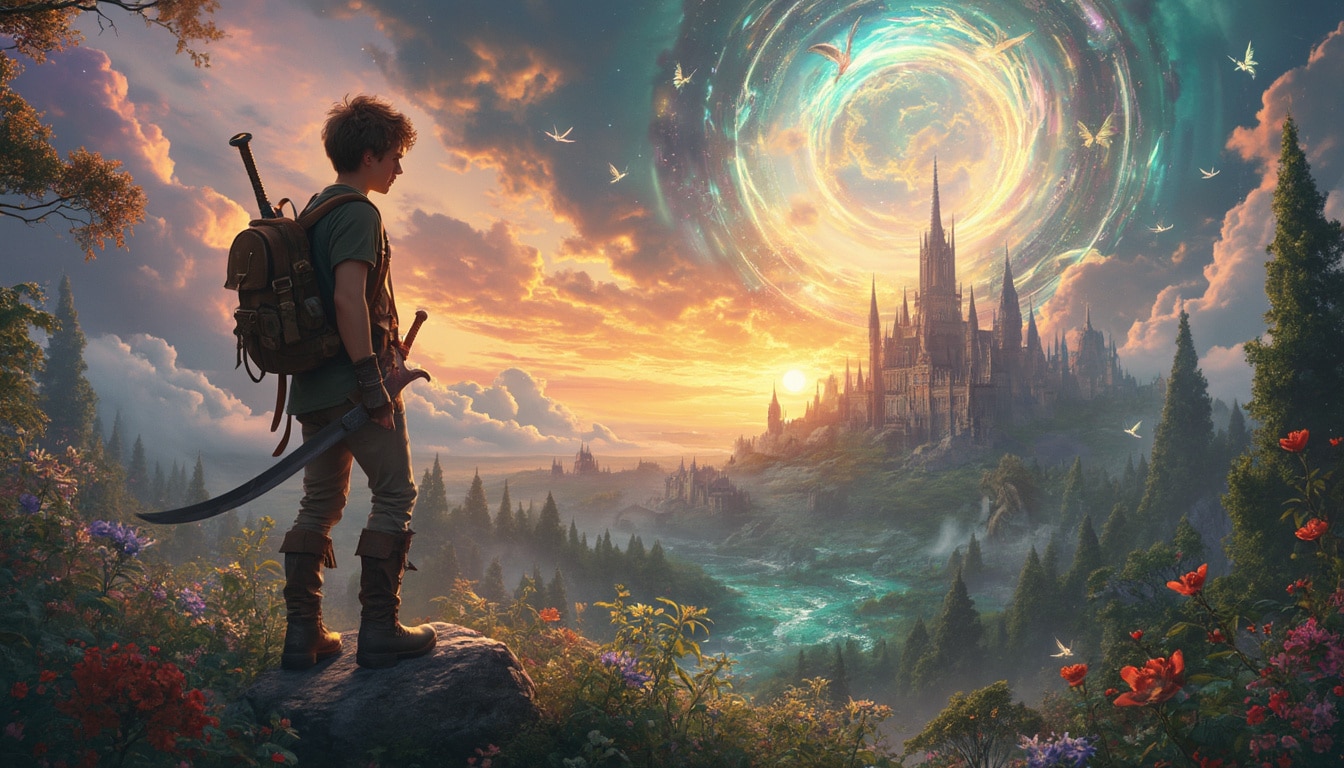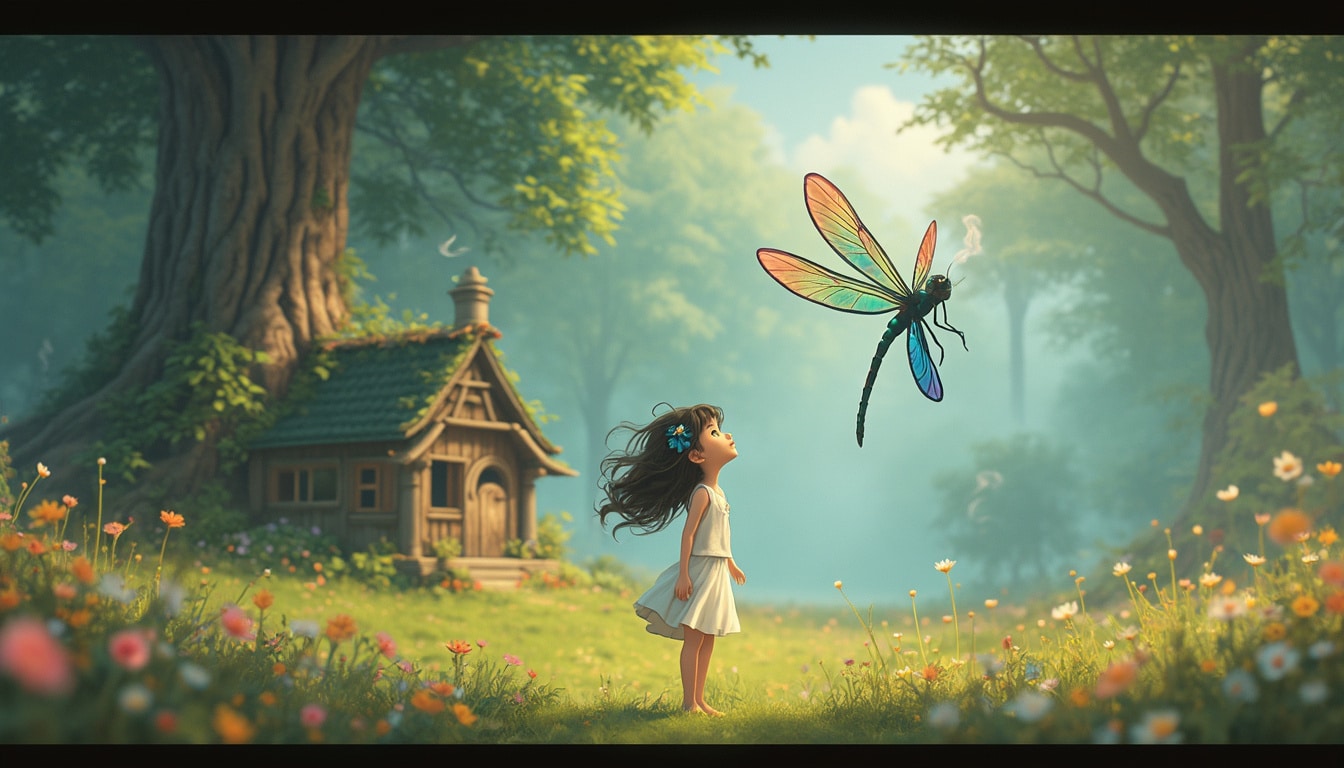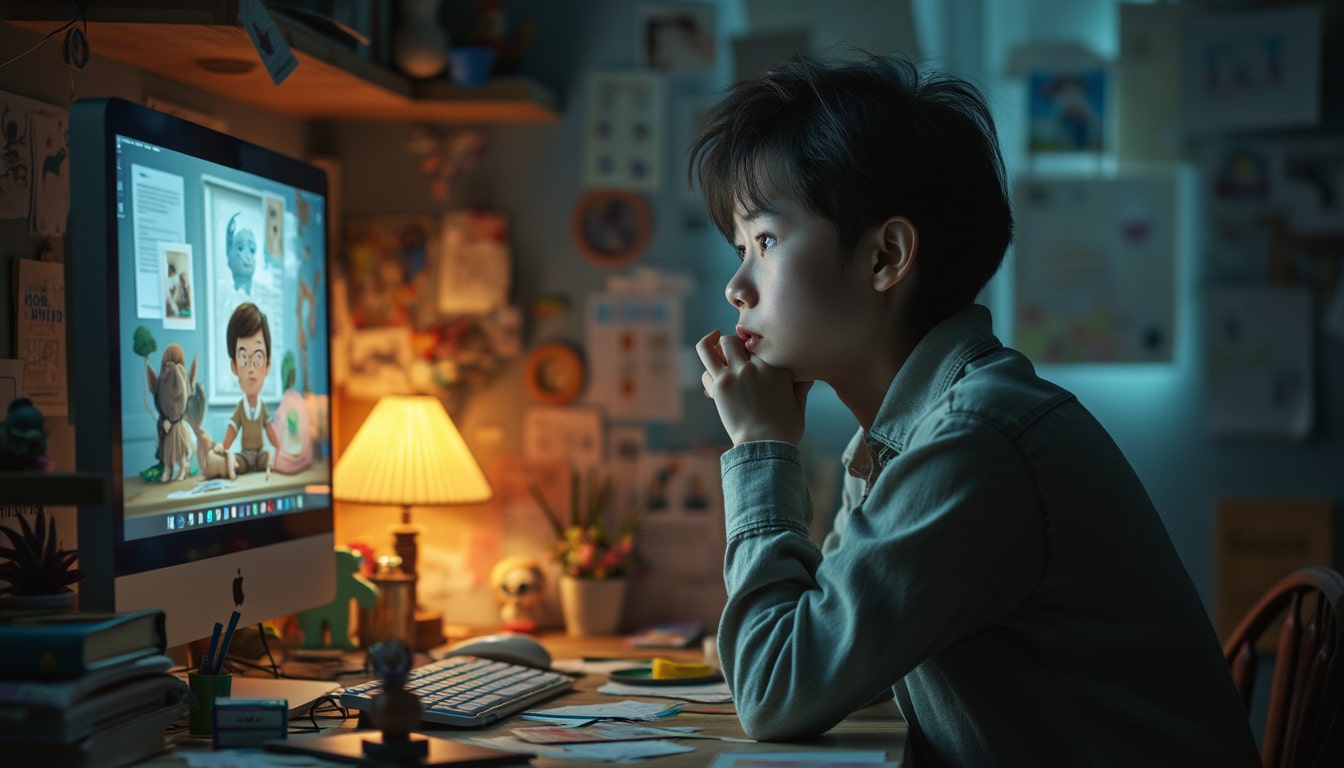« `html
Step into the enchanting world of Versailles like never before. Experience the lost gardens of the 17th century through groundbreaking virtual reality. Since March 25, 2024, the Château de Versailles has unveiled an immersive journey into its storied past.
This innovative VR experience blends heritage with technology, allowing visitors to wander through gardens that have been absent for centuries. Imagine strolling alongside the legendary André Le Nôtre, the king’s famed gardener, as he guides you through these once-majestic spaces. It’s a seamless fusion of history, art, and innovation set against the grand backdrop of Versailles.
The immersive journey, titled “Versailles: The Lost Gardens of the Sun King,” invites visitors to explore three mythical gardens: the Royal Menagerie, the Labyrinth, and the Grotto of Tethys. Utilizing advanced multi-user VR technology, up to six participants can embark on this adventure together, experiencing the synchronized magic of a collective voyage through time.
Crafting such a faithful reconstruction required the expertise of numerous specialists. Gedeon Experiences, Small Creative, and Vive Arts collaborated closely with the Château de Versailles to ensure historical accuracy. By leveraging detailed archives, historian accounts, and archaeological findings, the VR environments accurately recreate these forgotten gardens with stunning precision.
The state-of-the-art experience is delivered via HTC Vive Focus Vision headsets in a dedicated room within the château. Each session lasts approximately 25 minutes and is available in French, English, and Chinese. Priced at 15 euros and open to visitors aged 8 and up, this VR initiative showcases how cutting-edge technology can revitalize cultural mediation, making history both accessible and engaging.
For those who can’t make it to Versailles, there’s good news at home. Two complimentary VR experiences are available on Steam. “VersaillesVR,” developed in partnership with Google Arts & Culture, offers a photogrammetrically modeled tour of 21 rooms within the château, covering over 36,000 square meters with high precision. A night mode option lets you explore the grounds under moonlight, creating a magical and intimate atmosphere.
The second offering, “Experience Versailles,”strong> takes you back to two pivotal historical events: the diplomatic visit of the Kingdom of Siam in 1686 and a masquerade ball in 1745. These scripted sequences transport you to a bygone era, allowing you to soak in the ambiance, decor, and royal court etiquette. It’s a magnificent way to immerse yourself in the grandeur of Versailles from the comfort of your own living room.
Share the article:
Imagine donning a VR headset and stepping into the majestic world of Versailles, not just any part, but the hidden gardens that have been lost to time. Since March 25, 2024, the Château de Versailles has unveiled an innovative virtual reality experience that transports visitors back to the 17th century, allowing them to explore gardens that once flourished under the meticulous care of André Le Nôtre, the illustrious royal gardener.
Table of contents
Togglewhat are the key features of Versailles’ new VR experience?
The VR experience, aptly named « Versailles: Les Jardins perdus du Roi-Soleil, » offers a deep dive into three legendary gardens: the Ménagerie royale, the Labyrinthe, and the Grotte de Téthys. Each garden is meticulously recreated to reflect its historical grandeur, providing an interactive journey through Versailles’ botanical masterpieces. Guided by a virtual André Le Nôtre, visitors can wander through these mythical landscapes either solo or with up to six participants, ensuring a collective and synchronized experience.
The multi-user aspect transforms the solitary act of exploring into a social adventure, where friends and family can share the marvels of the seventeenth-century gardens. This innovative approach not only enhances engagement but also fosters a deeper connection with the historical narratives embedded within each garden’s design.
how historically accurate is the VR reconstruction of Versailles’ gardens?
Accuracy is the cornerstone of the Versailles VR experience. The project is the brainchild of collaborations among Gedeon Experiences, Small Creative, and Vive Arts, all working closely with the Château de Versailles. These partnerships ensured that every element of the gardens is grounded in extensive historical research. The environments are built upon detailed archives, historians’ testimonies, and archaeological findings, resulting in a faithful and credible representation of gardens that have been lost for centuries.
Experts in horticulture, history, and digital reconstruction meticulously documented every aspect, from the layout and plant species to the architectural features. This rigorous process guarantees that visitors are not just observing a digital recreation but are experiencing a living piece of history, enriched with facts and authenticity.
what technology powers the virtual gardens at Versailles?
At the heart of this immersive journey is cutting-edge technology. The experience is delivered through HTC Vive Focus Vision headsets, renowned for their high-resolution displays and seamless user experience. Guests enter a specially designed room within the château, where they can comfortably engage with the VR environment. The session lasts approximately 25 minutes and is available in multiple languages, including French, English, and Chinese, catering to the diverse international audience that Versailles attracts.
The seamless integration of VR technology transforms traditional cultural mediation, making history accessible in a dynamic and interactive manner. Visitors pay a modest fee of 15 euros, with accessibility starting from ages 8 and up, democratizing access to this unique historical experience. This initiative exemplifies how technological innovation can enhance the preservation and appreciation of cultural heritage.
can you explore Versailles’ hidden gardens from the comfort of your home?
Absolutely! Recognizing that not everyone can make the trip to Versailles, the château has extended the magic of its gardens beyond its grounds. Two complementary VR experiences are available for free on Steam, allowing enthusiasts to delve into the wonders of Versailles from anywhere in the world.
The first, « VersaillesVR, » created in collaboration with Google Arts & Culture, offers a detailed tour of 21 rooms within the château, all modeled using photogrammetry. This technique captures over 36,000 square meters with high precision, enabling visitors to explore the palace in stunning detail. For an added touch of enchantment, a night mode allows users to wander the halls and gardens under the moonlight, creating an intimate and magical ambiance.
The second experience, « Vivez Versailles, » invites users to relive two pivotal historical events: the diplomatic visit of the Kingdom of Siam in 1686 and a lavish masked ball in 1745. These scripted sequences provide a glimpse into the vibrant life of the royal court, highlighting the decorative schemes and social customs of the time. This at-home VR journey ensures that the splendor of Versailles is accessible to all, preserving its grandeur even from a distance.
how does Versailles’ VR innovation impact cultural heritage preservation?
The introduction of virtual reality at Versailles represents a significant leap in the preservation and promotion of cultural heritage. By blending history, art, and technology, the VR experience creates a multifaceted platform for education and engagement. This approach not only attracts tech-savvy visitors but also appeals to traditional enthusiasts of history and horticulture, broadening the reach of the château’s offerings.
Moreover, this initiative serves as a model for other historical sites looking to integrate modern technology into their preservation strategies. The meticulous attention to detail and commitment to historical accuracy set a high standard for digital reconstructions, ensuring that cultural narratives are maintained with integrity. Projects like these highlight the potential of VR to transform cultural storytelling, making it more interactive, immersive, and inclusive.
Furthermore, the use of VR aligns with sustainable practices by reducing the need for physical renovations and allowing broader access without the environmental impact of increased tourism. It fosters a deeper appreciation for heritage sites by offering new ways to experience and interact with historical spaces, ensuring their relevance in the digital age.
what are the benefits of multi-user VR experiences in historical exploration?
The multi-user capability of Versailles’ VR experience enhances the traditional solo exploration by fostering social interaction and shared discovery. Allowing up to six participants to engage in the virtual gardens simultaneously creates a communal learning environment where insights and experiences can be exchanged in real-time. This collective engagement amplifies the educational value, as visitors can discuss and reflect upon the historical elements together, enriching their overall understanding.
Beyond the educational benefits, shared VR experiences can enhance the enjoyment and memorability of the visit. Exploring the lost gardens with friends or family adds a layer of fun and collaboration, making the historical journey more engaging and less passive. This social dimension aligns with current trends in interactive media, where shared experiences are increasingly valued over solitary consumption.
how accessible is the Versailles VR experience for international visitors?
Accessibility is a key consideration for the Versailles VR experience. By offering the session in multiple languages—French, English, and Chinese—the château ensures that a global audience can fully engage with the content. This multilingual support breaks down language barriers, making the historical and cultural narratives accessible to a diverse range of visitors.
Additionally, the availability of free VR experiences on Steam broadens accessibility even further. Those unable to visit in person can still partake in the cultural richness of Versailles, ensuring that geographical constraints do not hinder the appreciation of this iconic heritage site. This inclusive approach underscores the château’s commitment to making history and culture available to all, regardless of location.
what future innovations can we expect in cultural heritage and VR?
The successful integration of VR at Versailles paves the way for future innovations in the realm of cultural heritage. As technology continues to evolve, we can anticipate even more immersive and interactive experiences that blend augmented reality (AR), artificial intelligence (AI), and advanced haptic feedback to create multi-sensory explorations of historical sites. These advancements will further blur the lines between the physical and digital worlds, offering unprecedented levels of engagement and interactivity.
Additionally, collaborations between technology firms and cultural institutions will likely become more prevalent, leading to more refined and diverse VR offerings. Projects like Walkabout Mini Golf on Mars and Intelcia IT Solutions’ innovations demonstrate the vast potential of VR beyond traditional applications, inspiring similar initiatives in the cultural sector.
Moreover, the incorporation of storytelling techniques and gamification elements can make historical exploration even more engaging. Interactive narratives and quests within VR environments can transform passive observation into active participation, encouraging deeper learning and retention of historical knowledge.
how can VR experiences influence the way we perceive history and culture?
Virtual reality has the power to revolutionize our perception of history and culture by making it more tangible and emotionally resonant. Traditional methods of learning history—through books and lectures—can sometimes feel detached and abstract. VR, on the other hand, immerses individuals in the very environments where historical events took place, fostering a personal connection to the past.
This immersive quality can enhance empathy and understanding, as users witness history firsthand rather than through secondary accounts. Experiencing the opulence of Versailles’ hidden gardens in VR allows individuals to appreciate the artistic and cultural significance of these spaces in a way that static images or descriptions cannot convey. This deeper engagement can inspire a greater appreciation for cultural heritage and encourage continued support for preservation efforts.
Furthermore, VR can democratize access to cultural experiences, leveling the playing field for those who may not have the means to travel or attend exhibitions. By providing virtual access to iconic sites like Versailles, VR ensures that cultural education and appreciation are accessible to a broader audience, fostering a more inclusive and informed global community.
additional resources to explore innovative experiences
If you’re captivated by the fusion of technology and culture showcased at Versailles, there are plenty of other innovative experiences to explore. For instance, discover Walkabout Mini Golf on Mars, where gravity-defying mini-golf challenges await in the Martian Garden. Or delve into the technological innovations by Intelcia IT Solutions that are enhancing IT performance through cutting-edge talent and strategies.
For those interested in the intersection of research and innovation, tune into Episode 18 of the Homo Economicus Podcast, which explores how researchers are fueling progress across various fields. Additionally, explore how low-tech innovations are making waves at the Coblod Gardens in Venissieux, showcasing that sometimes the simplest solutions can lead to the most impactful changes.


